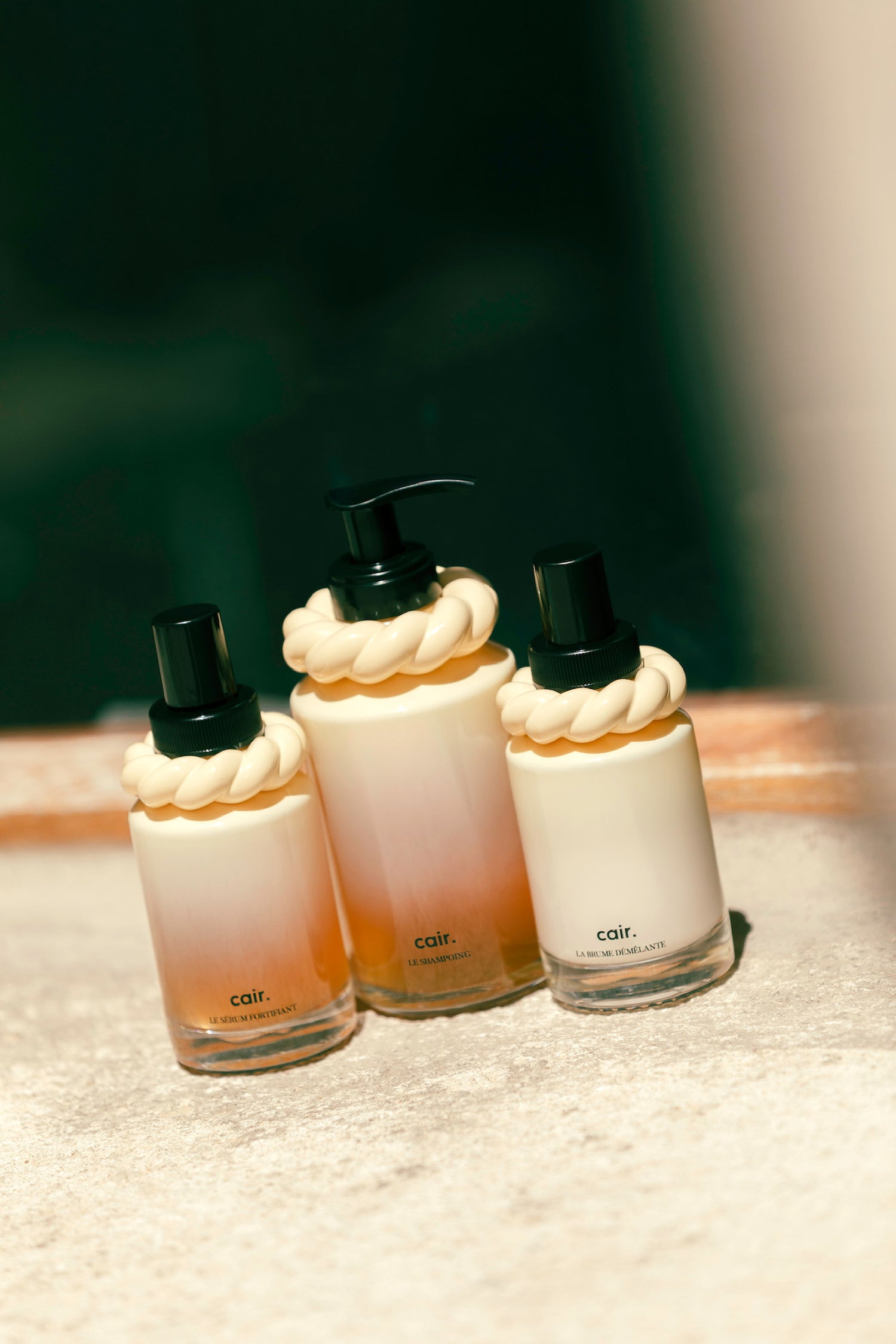Split ends are a visible sign of weakened hair fibers. While common, they can absolutely be prevented. Understanding their causes and the different types of split ends can help you adopt the right habits for healthier hair.
Why do I have split ends?
Several factors can lead to the appearance of split ends. First on the list: excessive use of heat styling tools like hairdryers, straighteners, or curling irons. High temperatures damage keratin, making hair dry and brittle.
Another culprit is harsh brushing, especially on wet hair. This can further weaken the fiber and worsen existing micro-tears.
Repeated coloring or bleaching is also a frequent cause. These treatments make the hair more porous and fragile, increasing the risk of breakage.
Lack of hydration or nourishment, often due to unsuitable hair care products, can also contribute. The result: dull, dehydrated lengths that are more prone to splitting.
Finally, environmental stressors like pollution, UV rays, or hard water gradually damage the ends—especially if they aren't protected on a daily basis.
The different types of split ends
There are several types of split ends that reveal the condition of the hair:
- Classic split ends: Shaped like a "Y," this is the most common type. It appears more quickly on fine hair or hair that is frequently straightened.
- Multiple split ends: The hair splits into several ends, resembling a feather. This type mainly affects dry, curly, or textured hair, which is more fragile and often less hydrated.
- Frayed split ends: The tips branch out like a tree's branches. This is common in long, damaged, or bleached hair.
- Broken split ends: In this case, the tip isn’t split but broken, often due to repeated friction (scarves, pillows, clothing, etc.).
How to prevent them?
Preventing split ends starts with a gentle hair care routine. Choose sulfate-free and silicone-free products, such as our fortifying serum, our natural shampoo, and our leave-in detangling spray. Respectful of the scalp's microbiome and suitable for every hair type (oily, dry, curly, etc.), Cair hair products maintain your scalp's balance while helping to space out washes.
Choosing the right hairbrush is also essential: for example, use a nylon and/or boar bristle hairbrush from La Bonne Brosse to gently detangle your hair without breaking the fibers. It distributes natural sebum from roots to ends, helping to strengthen the hair's protective barrier.
To complete your hair care routine, also consider using a protective mask. In addition to deeply nourishing the hair, the Cair Repair Hair Mask shields your hair from external aggressions, like sun exposure and pollution—leaving your hair stronger, less dry, and less brittle after sun exposure.
Finally, we recommend wearing a hat when going out and avoiding tight hair elastics. Choose velvet or silk scrunchies and loose braids instead.

